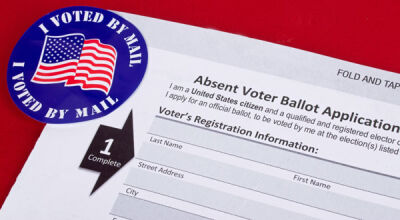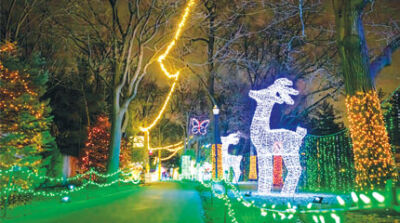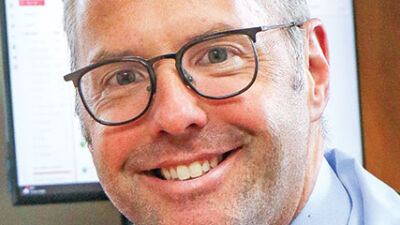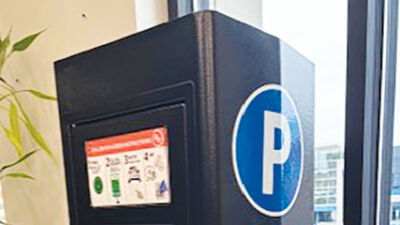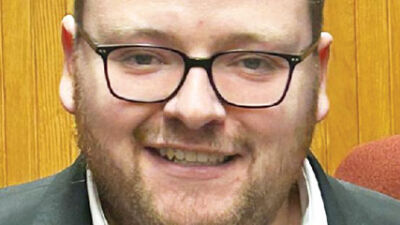ROYAL OAK — On Nov. 8, Royal Oak voters will have to vote yes or no on three millage proposals.
Residents will be asked to vote in the general election on two proposals for the city of Royal Oak and one for Royal Oak Schools.
City proposals
The first Royal Oak ballot question is the Senior Services Millage Proposal.
The ballot language for the question states, “Shall the limitation on the amount of taxes which may be imposed on taxable property in the City of Royal Oak, Michigan be increased by 0.2000 mill ($0.20 per $1,000 of taxable value) for a period of five (5) years, 2022 to 2026, inclusive for the sole purpose of providing fundings for services, activities, and programs for “older persons” pursuant to the authority provided by Act 39 of PA 1976, specifically MCL 400.576? It is estimated that, if levied, the 0.2000 mill would raise approximately $622,000 when first levied in December 2022. Shall this proposal be adopted?”
Royal Oak City Manager Paul Brake said the millage would provide a dedicated funding source for senior services, programs and the center. The city previously funded these through senior center fees, membership and the city’s general fund.
“What we’re trying to curtail is if, later on, if we have to make reductions in services, we’d want to make this self-sustaining financially and that we would not be looking at any reductions,” he said. “There’s not any immediately planned. However, in the future, as we go to balance the budgets, it could be targeted to reduce programming there. And it may be a case of increasing fees, eliminating hours, reducing staff, there’s any number of things that potentially could happen in the future.”
Brake said the millage, if approved, would specifically fund the senior center and that the money that would come in is roughly the equivalent to the amount that is funded out of the general fund.
“That doesn’t necessarily mean that it will entirely replace that, but the more important thing to remember is that this will be a dedicated funding source and we don’t know what available resources are in the future,” he said. “The draft plan that’s coming from the aging-in-place task force, they will be recommending funds for improving programming. So generally that’s, you know, what the senior services do, support services and expanding access for individuals with disabilities.”
The second ballot question in Royal Oak is a charter proposal for a “Parks, Forestry, Recreation, Playgrounds And Animal Shelter Millage.”
The ballot language states, “City of Royal Oak Charter Amendment authorizing the levy of a five-year tax millage of up to 0.700 mills for parks, forestry, recreation and playgrounds including animal shelter purposes, commencing December 2022.
“It is proposed that Section 11(e) be added to the City Charter of the City of Royal Oak authorizing the levy of up to 0.700 mills ($0.70 per $1000 of taxable value) for a period of five (5) years, 2022 to 2026, inclusive, to be used for parks, forestry, recreation and playgrounds, including animal shelter purposes which will raise an estimated $2,175,794 when first levied in 2022. Shall the proposal be adopted?”
Brake stated the millage is for park maintenance for more than 300 acres of space in its 50 parks. The money for maintenance currently comes from the general fund, but with the millage, the city can bring in more than $500,000 a year for capital improvements.
“In the last budget process, we had over $6 million of requests for funding upgrades,” he said. “What I’m talking about is replacing aging playground equipment, resurfacing tennis courts, resurfacing basketball courts. All of these are expensive. Implementing renovation of the number of parks that are out there.”
School district proposal
The last ballot question comes from Royal Oak Schools, the Building And Site Sinking Fund Tax Renewal Proposition.
The proposal’s language is, “This proposal, if approved by the electors, will renew and restore the authority, last approved by the electors in 2013 and which expires with the 2022 levy, for the School District to levy a building and site sinking fund tax, the proceeds of which will be used to make improvements and repairs to the School District’s facilities. Pursuant to State Law, the expenditure of the building and site sinking fund tax proceeds must be audited, and the proceeds cannot be used for teacher, administrator or employee salaries, maintenance or other operating expenses.
“Shall the Royal Oak Schools, County of Oakland, State of Michigan, be authorized to levy one (1) mill ($1.00 per $1,000 of taxable valuation), for a period of ten (10) years, being the years 2023 to 2032, inclusive, to create a building and site sinking fund to be used for the construction or repair of school buildings, school security improvements, the acquisition or upgrading of technology and other purposes, to the extent permitted by law? This millage would provide estimated revenues to the School District of approximately $3,434,697 during the 2023 calendar year, if approved and levied.”
Superintendent Mary Beth Fitzpatrick stated that the millage was approved by voters 10 years ago and that there has been no increase or decrease in the amount levied to residents.
Over the last decade, she said a Headlee rollback did cause the amount levied to slightly fall under 1 mill. What’s on the ballot is the same rate that was approved 10 years ago.
According to Fitzpatrick, the proposal will allow the district to do large scale projects at its buildings, such as roof replacements, paving, fencing and technological upgrades.
“(Technology) was not a part of the BSSF program 10 years ago when our millage was last approved,” she said. “We also will use it for safety upgrades that continue to come up. So cameras, obviously, fencing and lighting are part of safety plans as well.”
Fitzpatrick said they have an index of proposed projects for the next 10 years that they aim to tackle if the millage is approved. This includes electrical and mechanical updates; heating, ventilation and cooling upgrades; and elevator upgrades.
“We can’t predict when some of these things will fail, but we should certainly know when they may begin to wear out and need to be replaced on a regular cycle,” she said. “We do have that plan set and ready for the next 10 years of proposed uses.
“We always appreciate the support of the community for our important school initiatives,” she said.
 Publication select ▼
Publication select ▼